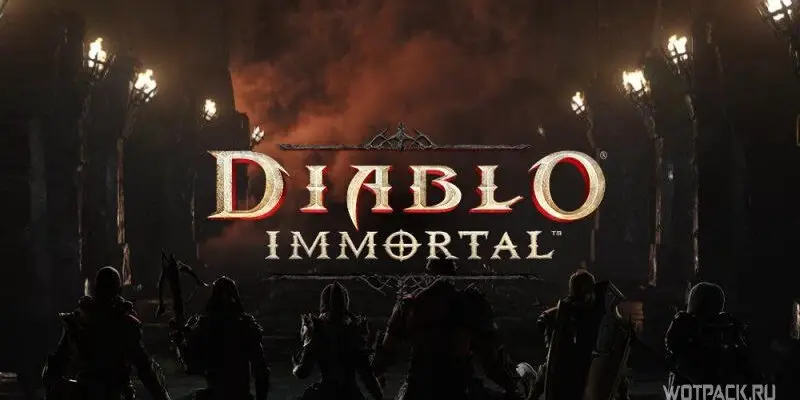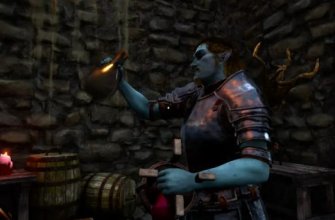To eradicate evil, you need to understand the topic enough, in the guide we talk about all the basics of Diablo Immortal.
Diablo Immortal is the long awaited Action-RPG from Blizzard. Players will have to confront evil, but now the events that took place between Diablo 2 and Diablo 3 will be revealed. To get the most out of the game and successfully complete the campaign, you need to understand the basic principles of the gameplay component, equipment systems and skills, and many other important aspects. The basics and beginner tips in the Diablo Immortal guide will introduce beginner players to all the important details.
Class selection

Diablo Immortal offers a choice of sixdifferent classes, but gradually their number may increase. If rushing into crowds of enemies, dealing damage to everyone around, is a favorite strategy, pay attention to Crusader, Barbarian or Monk. For those who want to play more carefully and more prudently, dealing damage from afar, you should choose Demon Hunter, Wizard or Necromancer. The advantages and disadvantages of each class are summarized below.
Barbarian
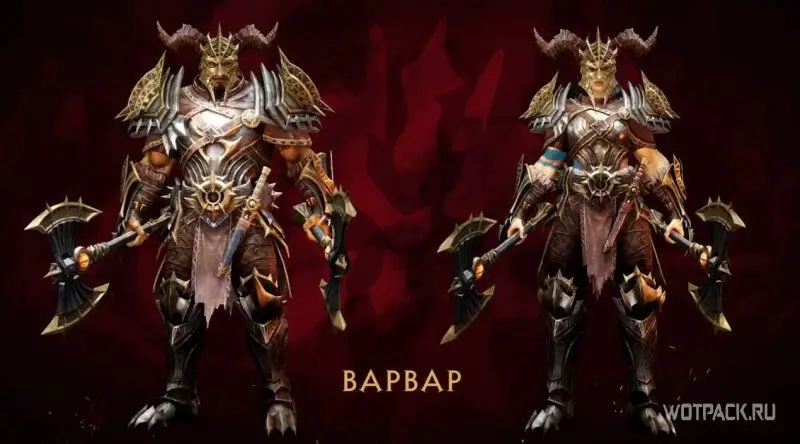
The Barbarian is a melee fighter who feels very confident in a crowd of enemies. The main reason for this confidence is the very strong Endless Rage (Undying Rage) skill, which allows you to delay the time of death and heal from the damage inflicted. This class does not have a shield and loses in mobility, e.g. Crusader, but the area attack and additional damage perfectly compensate for these disadvantages.
The character is well suited for the role of a tank that deals damage in order to protect rangers (for example, the Mage) with his body. Classic melee hero and easy to learn for beginners. Among the shortcomings, one can single out the lack of security, which does not allow playing alone at high levels. Another weakness is the long cooldown of some skills.
Best Barbarian builds in Diablo Immortal [PvE and PvP].
Crusader
< strong>Crusader is probably the easiest class to learn. Tank hero, with a lot of health and defense, having skills with area damage. Great for both PvE and PvP: it is extremely easy to play on it (only a Necromancer can counter the Crusader), the class has high mobility due to the steed (which is blocked by control). The advantages are in strengthening allies, pulling, the ability to jump into the crowd and, of course, the impact on the team.
Weaknesses include exposure to elemental damage, low damage on a single target and a small range of good builds.
Best Crusader builds in Diablo Immortal [PvE and PvP].
Demon Hunter

Demon Hunterconsidered one of the weakest but most fun classes in the game. The main style of play for this type of heroes is constant movement, which will compensate for the lack of DH. This class has the ability to deal damage on the move, allowing you to stay on the battlefield a little longer. He is strong in PvE only up to the middle of the storyline, then it becomes more difficult and problematic to play than other classes.
Of the minuses, it is also worth noting that Demon Hunterthere are not enough skills to control, and shooting on the move is extremely weak in PvP. The lack of skills to buff allies also makes the class a controversial choice for fighting players.
Monk
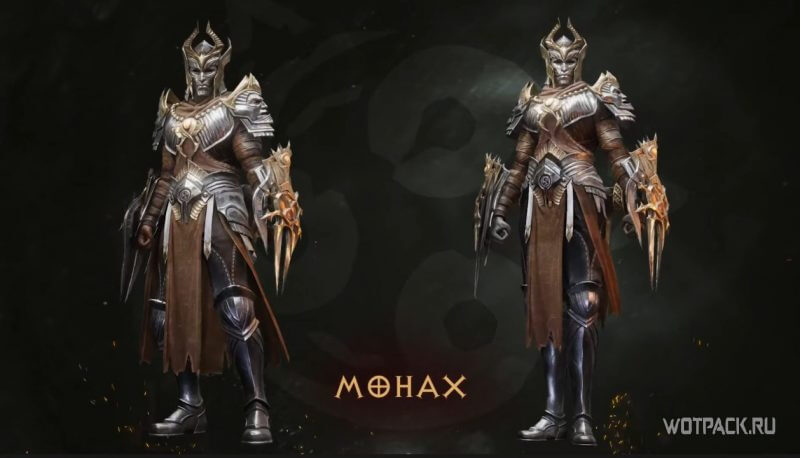
Monk– the most mobile and dynamic class, fighting in close combat and having several ranged skills. Ideal for those who like to break into a horde of opponents, deal damage and immediately move to a safe distance: a lot of dashes, jumps, several control effects and the presence of a shield. The number of skills entails a variety of builds.
On the downside, you can highlight the presence of channeled skills that will have to be aimed. In PvP, it is more likely to be considered as a support-damager, and not a full-fledged warrior. Due to its balance, it can be good for beginners.
Best Monk builds in Diablo Immortal [PvE and PvP].
Necromancer

Necromancer is a ranged class considered both as a damage dealer and as a support. An extremely strong fighter with melee attacks, control skills, and good summoning parameters. In addition, the Necromancer can buff the team by providing protection. In PvEespecially good thanks to summoning skills (skeleton, golem, skeleton-mage), which transfer the aggression of mobs to themselves.
Of the shortcomings, it is worth mentioning only lack of crowd control. Otherwise, the class is extremely simple, independent and strong in all game modes.
Mage/Wizard
The Wizard is one of the hardest classes in the game. The difficulty of mastering a magician can be explained, firstly, by low resistance to damage, which makes you constantly fear any attack, and, secondly, by combinations of skills that you need to hone and know.
Sorcerer
strong> is great for dungeon crawling in the late game as well as team domination in PvP, but all this will be possible only if you have a “fat” ally, for example, a Barbarian or a Crusader. If you keep the Mage safe, he can cast a huge amount of control and negative effects.
In-game interface
Map
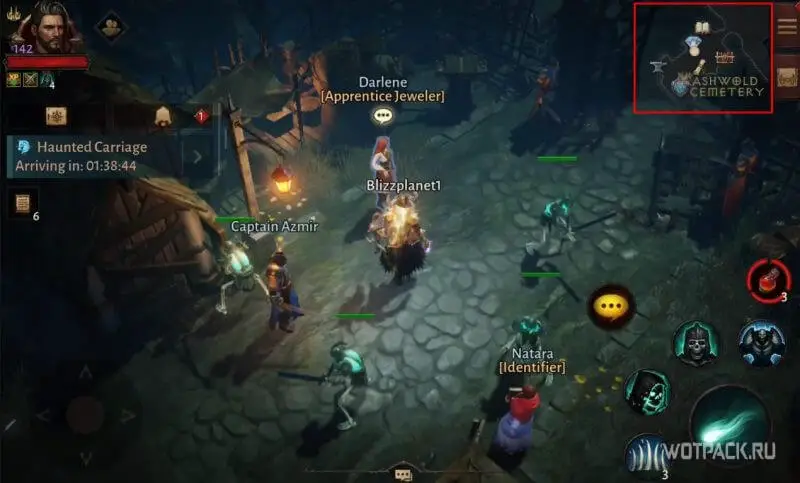
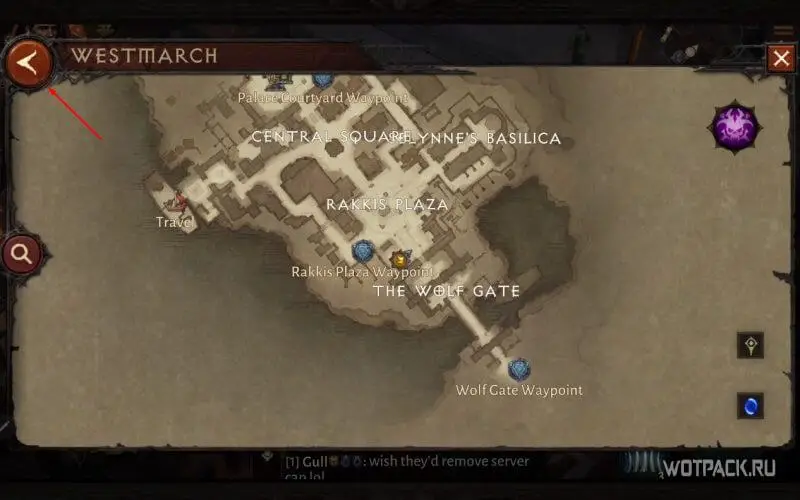
The very first thing you should know about in an RPG is the map, after all It will help you navigate and navigate. At the very top of the screen is a mini-map, which can be enlarged by clicking on it. In the upper left corner of this menu there is a Back button, which will open the big picture of the world, allowing you to see all the zones and the levels required for them.
Main menu
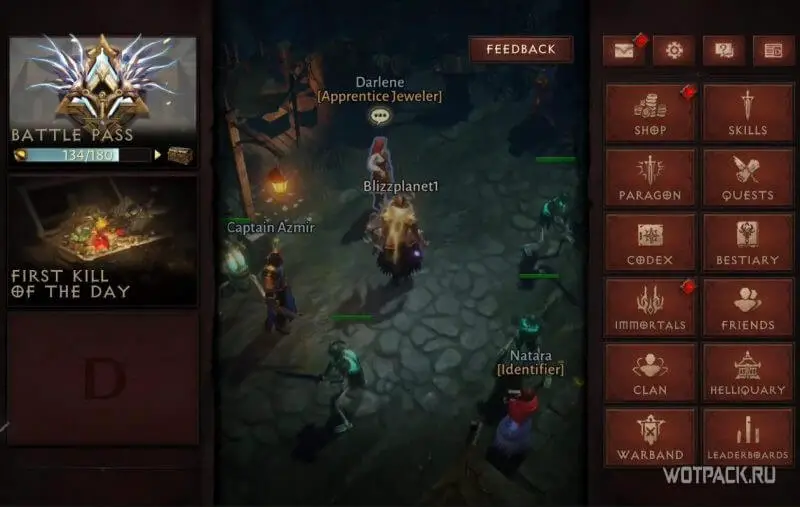
Menu is the most important part of the HUD game. The button is located next to the map and allows you to access a huge number of functions necessary for the game: shop, skills, quest journal, bestiary, friends, clan and much more.
Profile
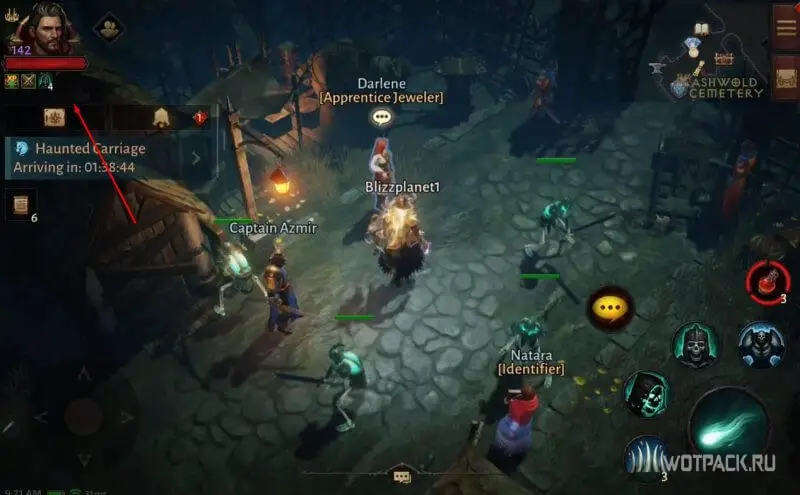
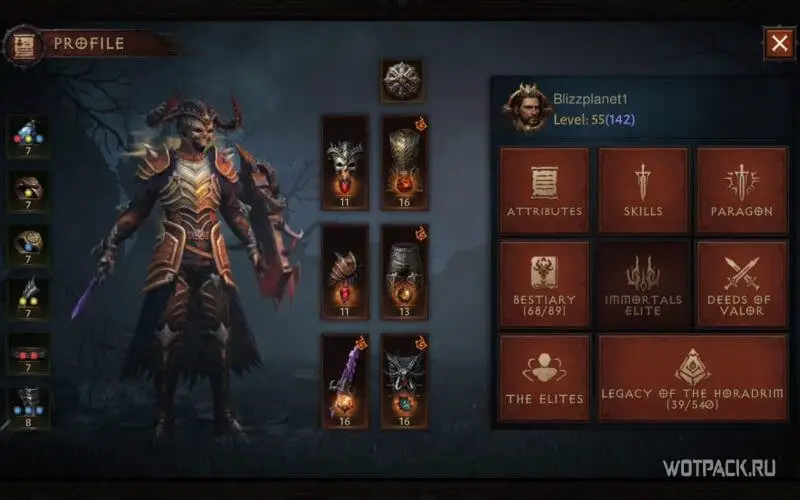
The next important thing is profile. By clicking on your avatar, the corresponding one will open, where all the necessary data is presented: skills, bestiary, badges, attribute strength, and more. From this menu, you can find out basic information about the character.
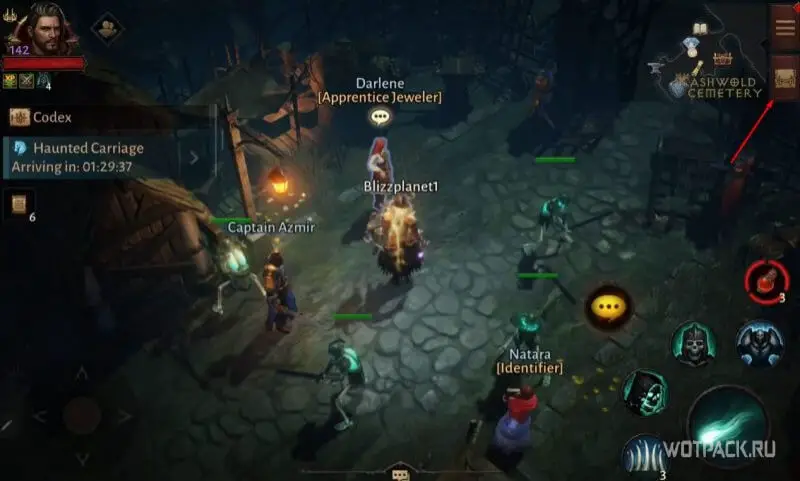
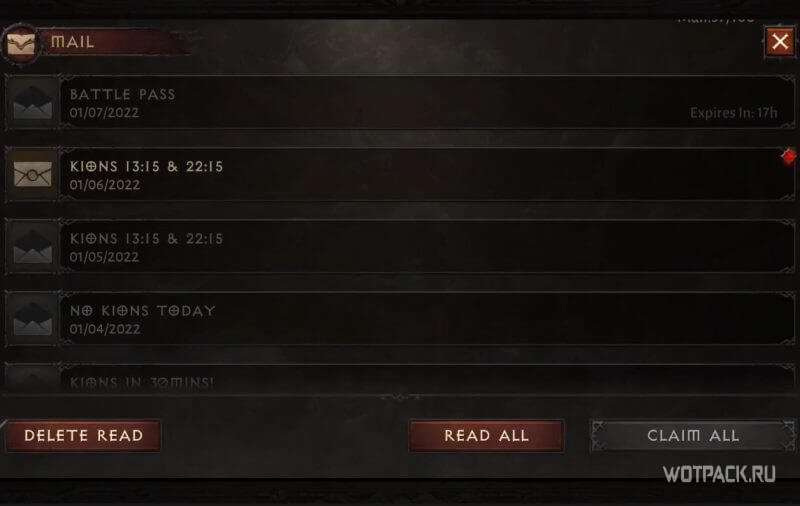
Last item – in-game maillocated under the main menu. This section allows you to receive notifications about various events, such as the imminent end of the Battle Pass.
Settings and difficulty selection
After the start of the game, Normaldifficulty will be set, which is a starting and introductory difficulty. Max character level – 60, after which all the drop-down experience does not go directly into leveling, but into a separate system withimprovements:
- Paragon provides additional buffs and skills.
- The Enhancement system allows you to change the difficulty to Infernal.
| Difficulty | Level Required |
| Hell I | Paragon 1-60 |
| Hell II | Paragon 30-130 |
| Hell III | Paragon 90-210 |
| Ad IV | Paragon 160-300 |
After changing difficulty, equipment drops will also change, and opponents will become stronger. To change the level, you need to move to Westmarch (Westmarch), open the map and select the desired option.
After unlocking the Hell I level, play only on it without reducing the difficulty: this will provide better loot and more experience.
Character attributes

Character parameters in Diablo Immortal are named a little differently – Attributes. All characteristics are divided into several groups: basic, primary, secondary and additional. The base parameters are damage, which enhances all outgoing attacks, as well as healing effects, and life, which is the character’s maximum durability in health points.
One of the main parameters are Attack Rating (OA) and Defense Rating(OZ), which become some kind of modifiers. If the Attack Rating is higher than the opponent’s Defense Rating, then significantly more damage will pass through it and vice versa. The main statistics of the character also significantly affect the damage dealt (strength, intelligence) and received (willpower, vitality).
Parameters Attack Ratings and Defense Ratingsregulate the level of PvE content that can be cleared. All content of the campaign corresponds to the level of the character, but not OA and OZ. This means that if you encounter difficulties in passing, you will need to raise these parameters, and not the level.
Battle Pass: reward system

Battle Pass in Diablo Immortal included in Code, becomes available at 10 level. By completing various quests, the player automatically earns points to use them to advance through the levels of the Pass. The Battle Pass itself has three categories:
- Guide
- Activities
- Quests
In order to get points inside the Battle Pass, you need to close Activities tasks as the main source. They can also be obtained from Guide or Quests, but it’s not as efficient. At the very top of the Code you can track your level, current points, and time until the end of the season. The number in the shield is the experience given when reaching the next level of HP.
Pass tasks are issued daily and remain on the list until the end of the season. In total, there are 40 levels in the list of rewards, each of them has different prizes: at 10, 15, 25, 30, 35 and 40 a unique reward is issued. Free Battle Pass has fewer rewards than the Premium version.
Most points are awarded for quests from the Reward Board and for Featured Activities
Paragon [Talent Tree]
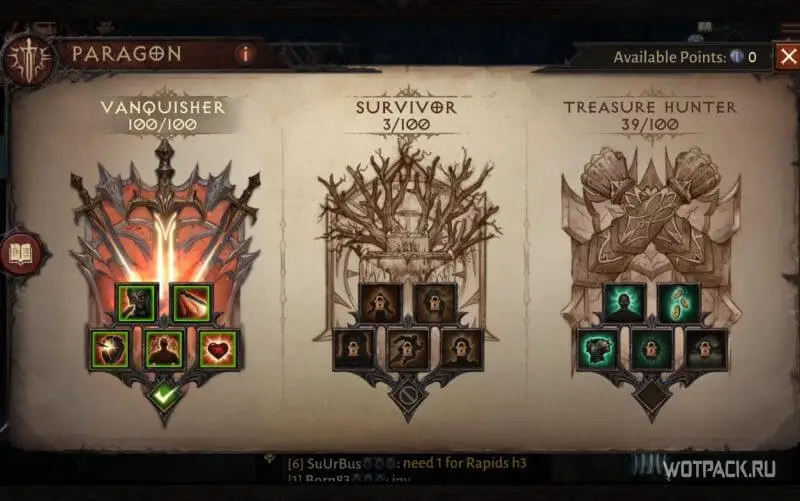
Paragon in Diablo Immortal – a talent tree that opens after reaching the maximum level 60. Now not levels will be awarded, but points. Each level is equal to one point of the Talent Tree. Basically, either passive skills, or active buffs, or some kind of performance enhancements are issued. There are six branches in total in this system:
- Conqueror– immediately available and gives buffs to attacks.
- Survivor – also available immediately, but already aimed at strengthening defense.
- Treasure Hunter< /strong> – Unlocked after reaching level 50, grants buffs to magic search, as well as search for experience and gold.
- Gladiator – becomes available at level 100, the branch focuses on gains and benefits in PvP mode.
- Soldier– Unlocked at Paragon level 150, mainly provides group bonuses in both PvE and PvP.
- Inspirer— unlocks at level 150, almost identical in bonuses to Soldier.
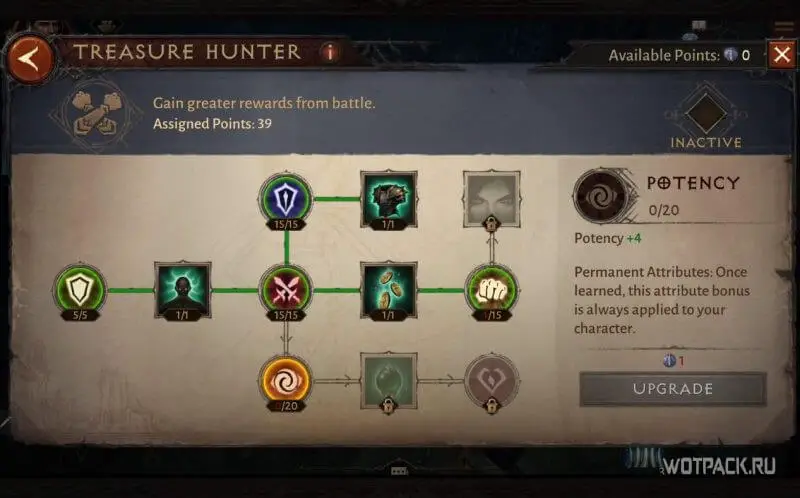
Each section of Paragon, in turn, is divided into:
- Passive skills (shown as circles) that always grant their stat bonus.
- Special skills(displayed as rectangles), which only work if the Paragon tree is activated and, accordingly, the activation of this skill.
Methods of restoring health
In Diablo Immortal, unlike most games, you can not buy potions to restore your health. There are seven main ways of regeneration in the game.
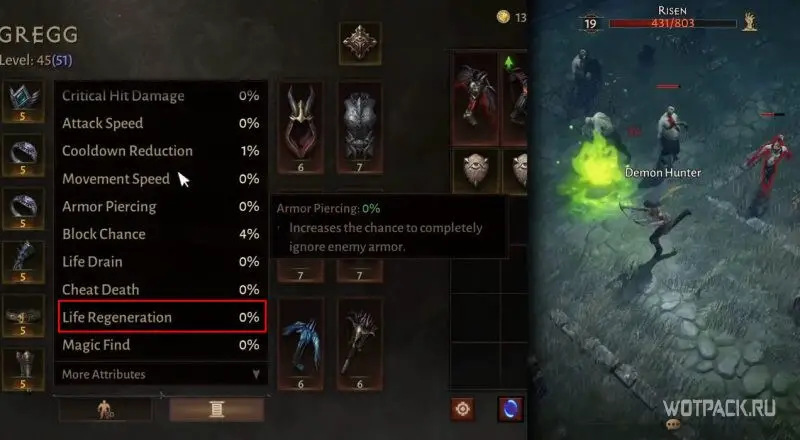
The first option is to upgrade the Life Regeneration (Life Regeneration) parameter presented in the Additional Attributes (Addition Attributes) section . With the help of various things, you can raise the characteristics of regeneration and in the case when the value is above 0%, then health will gradually be restored.
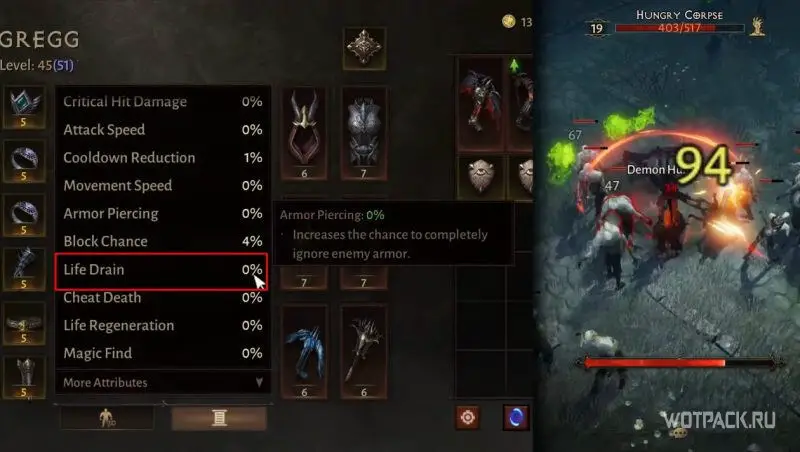
Leveling the Life Drain (Life Drain) parameter from the entire Additional Attributes (Addition Attributes) section will allow you to heal from dealing damage to enemies. The higher the percentage, the more health will be gained from the hit.
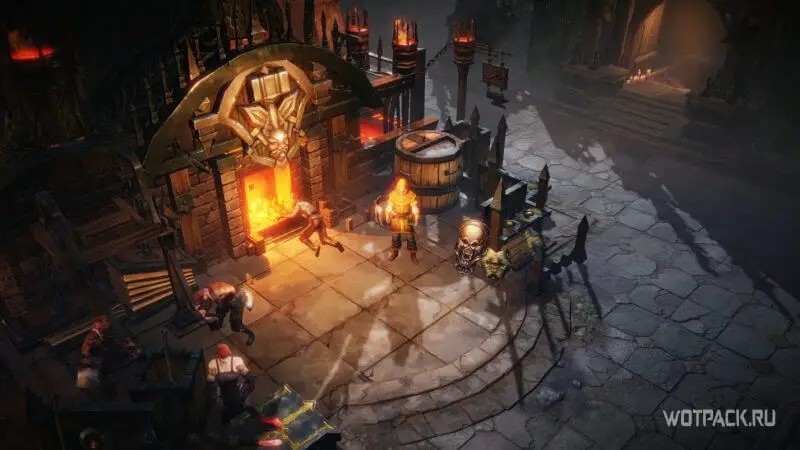
Like many RPGs, there is a Potion of Restoration, but they are limited to three units: no more can be purchased . After using the item, it will begin to gradually regenerate health, healing approximately 80% of its total health. To replenish the potion, one of the following conditions must be met:
- Visit the center of the region or Westmarch.
- Open the treasure chest.
- Kill the boss.
- Kill some normal enemies.
- Kill elite monsters (orange or purple).
Another way to heal with monsters is Orbs. With some chance each monster can drop an orb with a buff or event progress. Health Globe (Health Globe) is guaranteed to drop from a monster with several health bars, or randomly from an enemy. This object allows you to instantly heal for 30% of the entire stock.
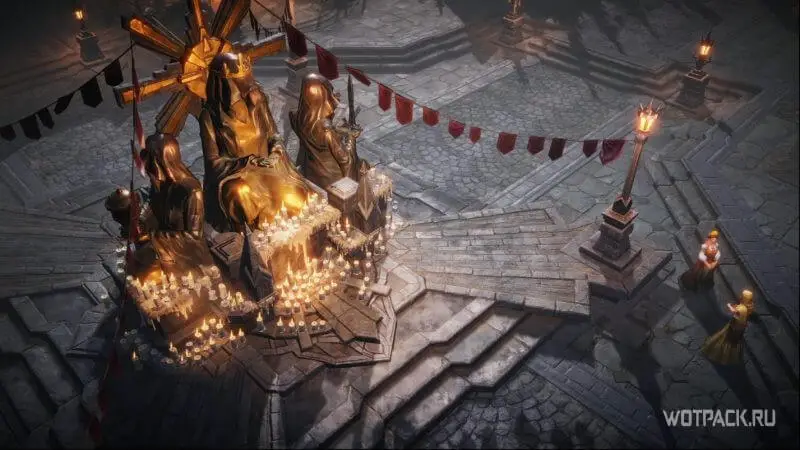
Visiting large centers locations(in other words: green zones with NPCs), or Westmarch will completely heal the character.
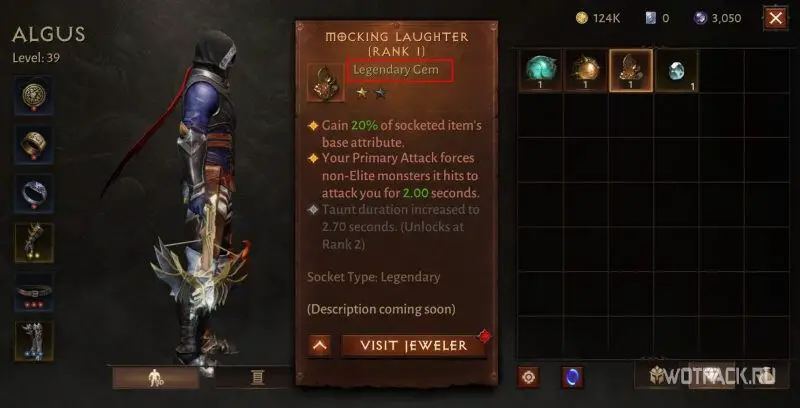
Last method recovery – effects that can be obtained either from various skills (both standard and Paragon), or from the properties of legendary gems.
How to use fast travel
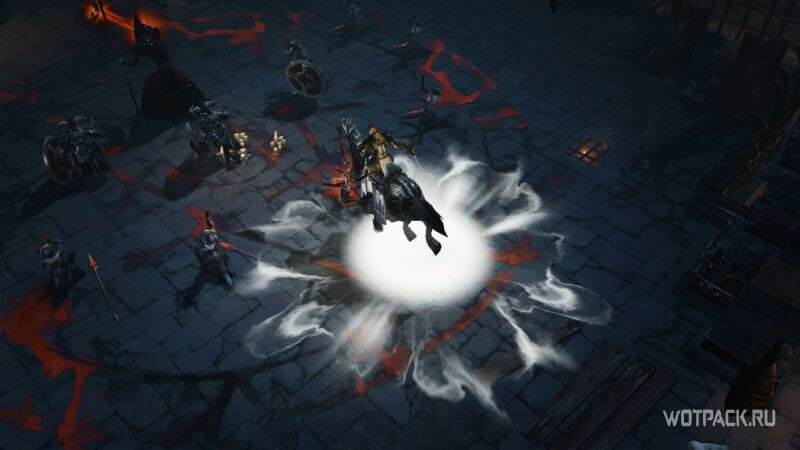
You can navigate in Diablo Immortal on your own: on a horse (for a crusader), manually using map knowledge, on foot along a built route, or automatically . Auto-navigation works on open locations where the storyline of the region is completed.
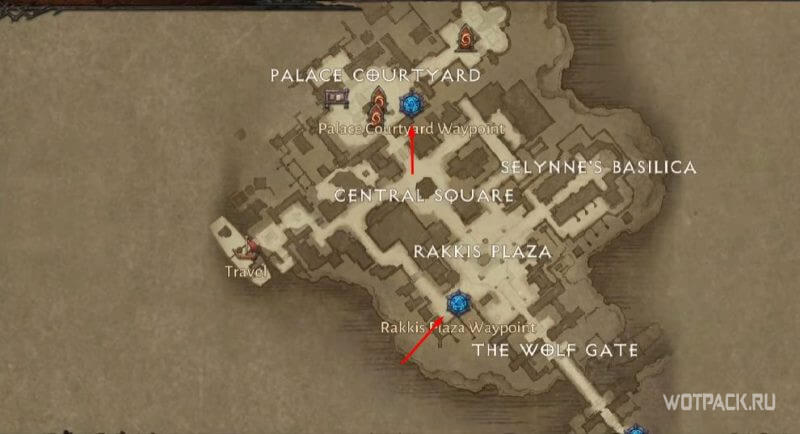
When all conditions are met, open the map and select the desired destination, after which the character will either automatically run or fast travel to the nearest open teleport , and from it will go on its own.
We recommend that you open all teleports right during the passage, so as not to waste time in the future.
Dungeons, Raids, and Trial Rifts
Dungeons
Dungeons in Diablo Immortal– separate content, access to which at a particular point in time is only available to the group included there: no one else will be able to enter inside at this time. Passing dungeons is necessary to collect various materials, parts of sets, experience, gold and other useful loot. In addition, almost every dungeon has sub-bosses and bosses.
After completing the dungeon for the first time, it will appear on the Daily Quest Board, Immortals, and Shadows.
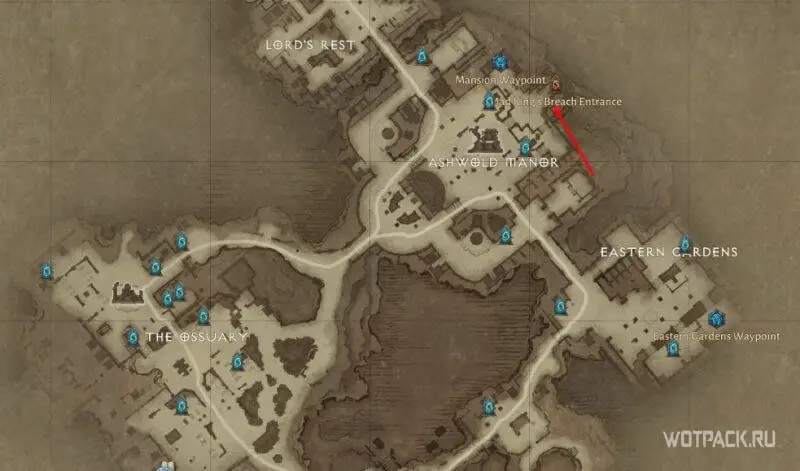
Some locations have dungeon entrances, as evidenced by the postscript at the end of Entrance (Entrance). Such a marker is marked with an elongated red portal icon. In Ashwold Cemetery (Ashwold Cemetery) this dungeon is Mad King’s Breach (Mad King’s Breach).

After activating the entrance, a menu will open with all the information about the dungeon: difficulty, minimum level and rewards, as well as two buttons: one suggests finding a squad for yourself, and the second sends you to the dungeon.
Raids
Raiding the Vault is a great way to get the best legendary items in the game. Players in the Shadows faction can team up in a group of up to 4 people and raid the Vault.
Raids are only available at certain times from 10:00 to 22 :00, it is listed in the raid menu.
Vault Raid
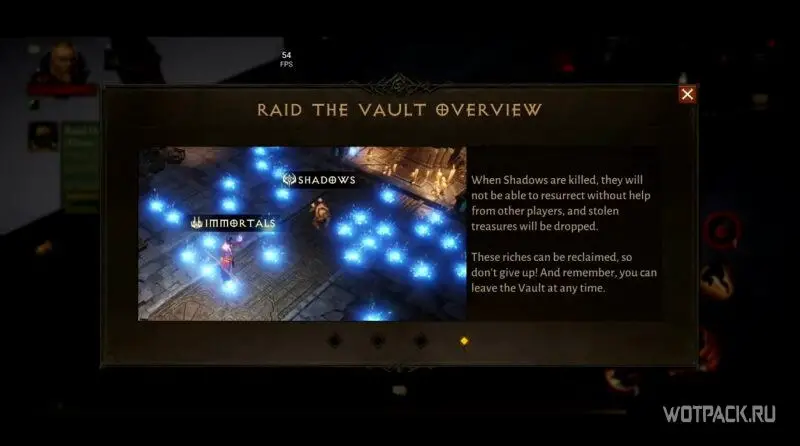
Playing as the Shadows, you can try to rob the Vault by going through the entrance near the Ascension Hall strong> (Hall of Ascension). Stealing the essence of Immortals, destroying Guardians and Guards of the Treasury, you can reach the very end. Each such Treasury has 4floors to be traversed first. Each floor is also filled with essence, gold, chests and of course enemies.
Vault Defense

Playing as Immortals, you can get Shadow raid notificationand rush to the defense of the Treasury. For certain actions, such as killing players, honor points are issued, their limit is limited to 700 units. Defense contributions are also valued by faction contribution points, which allow you to request loot in an auction format.
Test Rift
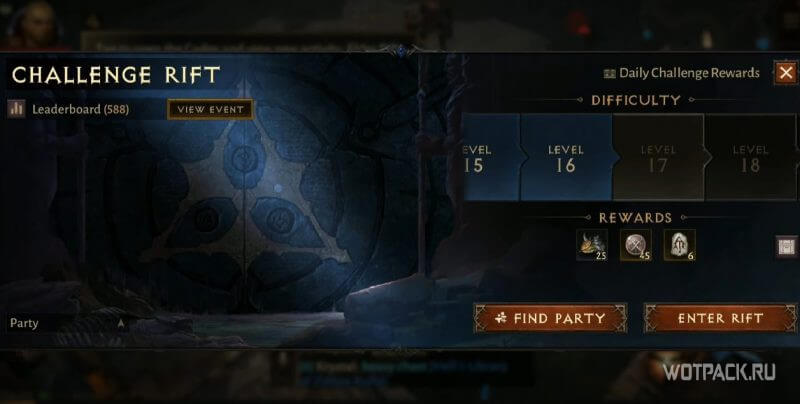
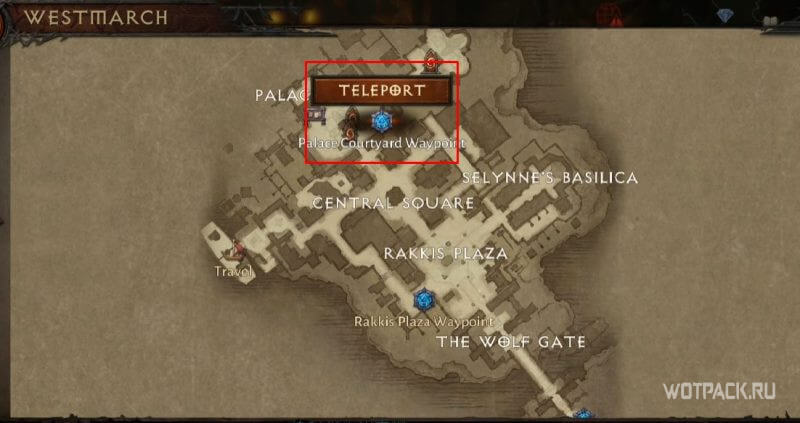
Test Rift in Diablo Immortal is a special type of Dungeon that has a level system (there are 100 in total) . The rift opens as part of the story questline, after arriving in Westmarch. To the north of the center, in the courtyard of the palace is the entrance to Fault. After interacting with the object, a menu will appear showing the level and rewards: a mysterious crystal, scrap metal, experience and some of the rare gold items.
The crystal will be received only upon the first passage of the level.
Blacksmith and Jeweler
Jeweler
Apprentice Jeweler, found in many locations (in Westmarch it is Seril), helps improve regular or legendary gems by taking this is a certain fee.
So far, there are 6 ordinary stones in the game, each of which can be upgraded to 7and more levels. The item is sold on the market, or knocked out from certain monsters. A regular gem is inserted into the slots for secondary equipment and gives a bonus to the main characteristics. Click on the desired item, then select Upgrade.
Another function of the Geweler is to create legendary gems using runes and platinum . The rarity of the gem (from 1 to 5 stars) is determined randomly.
Blacksmith
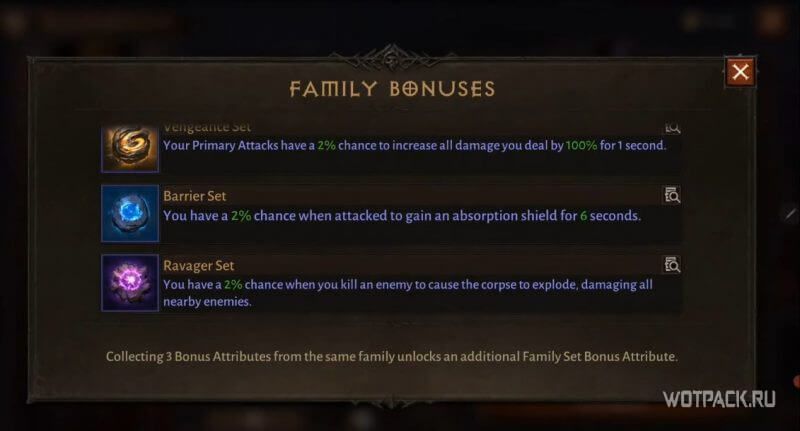
Blacksmiths, like Jewellers, are located in many locations, but have different names. This artisan offers the following services:
- Parse(Salvage) – when a lot of unnecessary low-quality items accumulate in the inventory, they can be sorted into materials for improvement. These resources are divided into three types: scrap metal, enchanted dust and glowing shards.
- Improvements (Upgrade) – a banal increase in the level of an item. If there is some high-level item in the inventory, then all progress can be transferred to another item.
- Reforging(reforge) – High level legendary items now have bonus family bonuses. Reforging allows you to swap bonuses around.
Legendary and Common Gems
Regular Gems
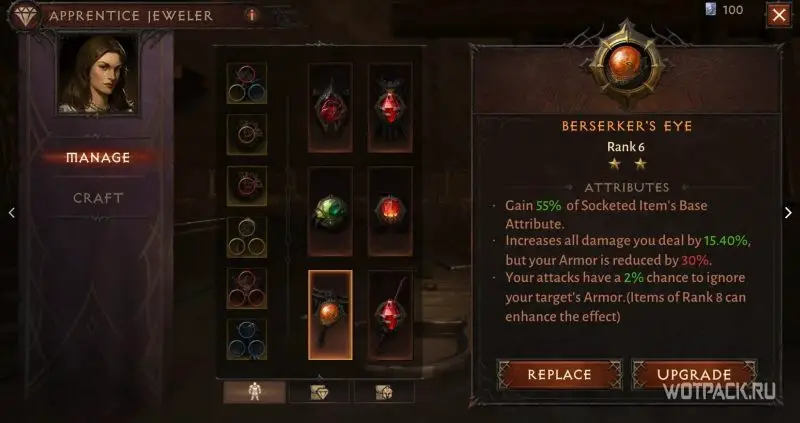
Regular Gems are used to apply to secondary armor pieces and decorations. Each equipment slot can hold up to three gems, often the number of cells depends directly on the type of item (from 1 to 3). Gem sockets fall into three categories:
- Red socket for red or crimson gems.
- Blue for light blue or blue gems.
- Yellow slot for orange or yellow gems.
Normal quality gems can be combined to improve them at the jeweler: fuses three itemsof the same color and rank to get a higher level. Each gem has different buffs, and leveling up multiplies these buffs.
Legendary Gems
Legendary gemsdiffer in some parameters and are valued much more than ordinary ones. Such a gem can be inserted into the main pieces of equipment, but now only one stone per slot.
Legendary gems have influence on base attributes (total damage and life parameter), as well as legendary parameters that affect other characteristics of the character. Getting gems of small levels is easy, closer to the opening of Paragon all equipment will be with gems, but the difficulty lies precisely in the cost of upgrading gems.
Elite monsters and Bosses
Elite Monsters

Elite monsters in Diablo Immortals are a special kind of regular mobs that have undergone some changes. Elite creatures are differentiated by colors to represent their rarity, as well as strength and drops.
The most common are blue and yellow. They have been transformed and enhanced by various skills and/or crowd sizes. They appear at a certain chance instead of their normal version.
Orange creatures are legendary elite monsters. They are marked with a shard on the map. They are much rarer, much more dangerous, and also have an increased chance of dropping a legendary item. Killing such an enemy will replenish the healing potion.
All elite monsters are just a kind of event that replaces ordinary opponents with some chance. All special opponents look the same, it’s just a stronger monster with an increased reward.
Bosses
Bossesin Diablo Immortal are often the most dangerous and well-rewarded opponents. Most of these opponents have several phases, which are marked with red icons on the health bar. The boss with 2 icons will change phase three times before dying. This system works like this: the higher the phase, the more skills and assistants the boss has. The transition to a new stage is accompanied by the release of healing spheres, which will allow players to hold on longer.
Some bosses can be taunted using summoned creatures.
In addition, there are zone bosses. Some of them appear periodically in a specific zone, others spawn only when conditions are met (events or the collection of the required amount of resources for the zone). All such enemies have a fixed location and are marked on the map.
Farm monsters in open locations
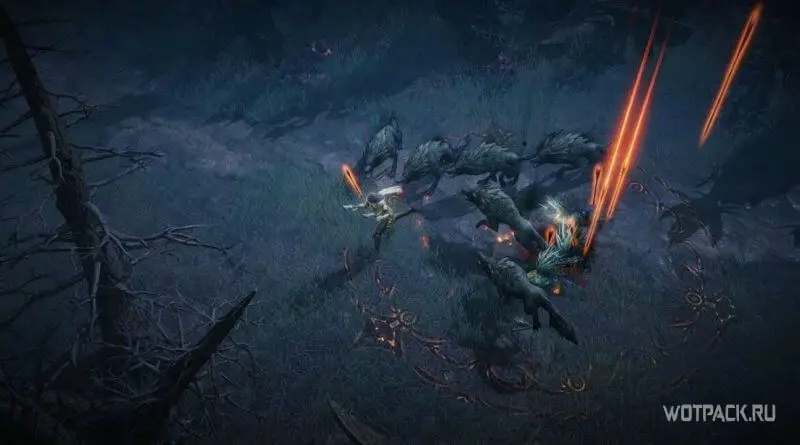
For more efficient completion of quests and farming, which is extremely important, you should properly allocate time. If you notice that a event is happening or there is a elite enemy, then it is worth taking the time to close this place of interest. You don’t need to stand on ceremony with ordinary enemies for farming, it takes too much time.
It’s best to farm monsters in one go rather than fighting a whole crowd. Wait for the rollback of all skills, then gather all the opponents into one horde, which will chase for some time, and then use combos on the whole crowd. This clearing will help you stumble upon elite monsters, or goblins, which will be discussed later.
Goblin Farm
Goblins are a separate type of elite monsters that are not going to fight, but simply take all their treasures and run away. They either live in the area initially, or may appear later. That is why it is useful to quickly clear the location and re-traverse it.
The most common location for goblins is the Domain of Horror (Domain of Horror), located in the desert region Shassar Sea< /strong> (Shassar Sea). They spawn here with a higher chance, but you can farm up to 20 of these enemies per day.




